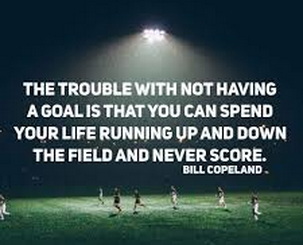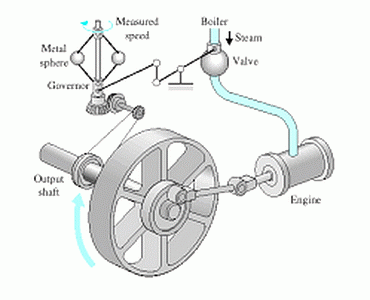The Whacky World of Goals
Initialization
The website opening page presented the site theme – we are our choices.
Making choices is an intellectual activity of an individual brain, an effort philosophers call thinking (2) responding to a “call” (1) also originating in the subconscious mind. Our target is confined to the significant sociotechnical system problems we label Category three.
“Thinking” underwrites choice making by comparing the knowledge about candidate fixes to a prioritized value system also held within the individual’s brain (3). Choices made that turn out to be good attest that high-stakes thinking took place. 1 2 3
The theme is so central to our life’s trajectory it is expressly connected to this page:
- Scope of page subject matter
- The logical couplings between theme, the sociotechnical system, and this page
- Choices to be made
Scope: This page is about the surprisingly complex and involved process of setting prudent goals. If you don’t set intelligent goals or don’t fully use your cognitive faculties in choosing them, the end you reach will be sunk cost. A good portion of the malfunctional social behavior you witness is a result of setting goals by business as usual.
Connections: Setting proper goals is directly tied to your life trajectory. It is always the first step in choosing your intellectual and physical efforts appropriately – the definition of intelligence. What value could there be in shooting at the wrong targets? Nobody gets through the checklist of task actions without a groan or two.
Setting goals, attaining goals
To help simplify the goal monster mess, we apply three general categories of human/social behavior in sociotechnical problem-solving situations. These categories are easy to apply without risk of making errors.
1 – Familiar, non-critical goals
These problems will get solved one way or another. For example, if your intent is to get a cup of decent coffee and your first go failed, you will redo your process and control it as many tries as it takes to get your brew. What consistently works becomes habit and “control” drops out of the proceedings. For Cat 1, do what you think best. Your approach is self-correcting.
2 – Precedented critical goals
If the tough, significant challenge you face has been satisfactorily resolved by others before you, you can visit implementations to discern the status when they started work and the working environment. Learn the methods they put in practice, and what they used for navigating to the goal, and recognizing attainment when the fix became viable. You can then safely emulate their approach. Their veterans will want you to succeed. For Cat 2, the blazed trail can be followed in confidence.
3 – Unprecedented critical goals
Most problems mired in dysfunctional social behavior are Cat 3 and critical. For those, you are always starting off with psychologically-damaged goods and an underwater project.
The following are signature characteristics of the Cat 3 set
- Exclusively socio psychological
- Abstract goal statement
- No specification in concrete terms
- Starting conditions unknown, working environment Plan A dysfunctional
- All prior attempts at goal setting and attainment failed
- There is no success precedent to evaluate and emulate
- No authentic responsibility for positive results
- Attempting to defy the 2½ rule
- High turnover
- Project budget depleted with sunk costs
- Applying information technology as a solution makes matters worse
There were eighty recorded attempts to build a Utopia, from 1600 to 1950 AD. Even the one based upon communal alcohol consumption failed. No one ever researched the failures for lessons learned. We now know the omission was deliberate because no one in science ever will research our social system successes either. The social sciences have revealed their true colors with deliberately avoiding their chartered purpose.
Cat 3 is we
If you suspect you have a Cat 3 challenge on your hands, you can be sure of it. The more you learn about the unprecedented goal, the more complex attaining it appears. To avoid the labor of thinking, simple causes and effects are used to divert efforts to a simple snake oil fix that can’t work.
In every Cat 3 there is a hierarchy of causes and a cascade of consequences, fractal like, that has no finish line. When we hit paydirt in 2013 and finally had a success reference to work with, we were humbled by the number of causes we never recognized, the consequences we never suspected, the tight connections between some causes and some effects that never occurred to us, and a slew of benefits we didn’t know were automatically delivered by Plan B, unavailable in Plan A.
If you have a Cat 3 to engage, you must resist all temptation to use reductionism to focus on pieces and parts. Cat 3s are sociotechnical system problems that will only get fixed by system solutions. Remember, Cat 3 is a psychological matter, no mass no inertia.
What you may not realize is that reductionism on Cat 3, puts it under the dominion of the Nash Equilibrium. That means if you improve on a part, the other parts will force you to restore business as usual conditions. Attempting a fix with information technology is total waste.

Cat 3 hard spots
- The sociotechnical system problem at hand has never been solved. It has a long history of failed attempts by reductionistic methods. And any improvements are not sustainable. The Nash Equilibrium, totally in control, erases every advance. Plan B circumvents the Nash because the system change comes to all components at the same time. There is no status quo to return to.
- The Goal -Seeking problem is ubiquitous, global
- No one knows what the fix looks like
- The strategy is psychological first, sociotechnical second
- Organizational dysfunction, totally psychological, is an equal opportunity social system Invariant human nature is why its fix has to be generic.
- It is ridiculously easy to start wrong and put things in a hole you then have to climb out of. Without trust every effort made to cope makes things worse. Everyone engaging Cat 3 before you gave up.
- It wastes serious resources as sunk costs, unrecoverable. Those repairing the damage and failing, those working on a remedy, no chance, and those lost opportunities for Plan B benefits obtainable automatically. It’s a hit on prosperity.
The only way a Cat 3 issue gets solved is taking outcome responsibility, system think, and a supercharged Process Of Elimination (POE). Treat Cat 3 as a socio-psychological system problem, not as a technical problem. You don’t fix sociotechnical system dysfunction by tangling with its pieces and parts or buying the latest project management software.
- Study the previous failed attempts
- Build a dynamic simulator/model of the dysfunctional system as-is and replicate the failures
- Build your specification of a successful system fix
- Sustainable
- No losers
- Generic
- Quick fix (no inertia)
- Take a stab at a system fix and run it on the simulator.
- Throw away what didn’t work
- Save what did work
- Take another stab at a inventing a system fix and repeat
- Radical changes speed up the POE process
- The causes will be psychological, the immediate benefits will be keystone psychological health and then tangible prosperity.
- When the fix specification is authentic, the fix becomes a quick fix.

The popularized “field” of goal setting and seeking, expressed in thousands of published books and articles on the subjects, is so corrupt, counterproductive, deceptive, and off-target, we decided to avoid those terms in presenting our decades-long struggle with setting, validating, and attaining goals, especially those that had no precedent to use as a GPS target destination. Philosophically, it is a separate matter from process control mechanisms of action. You have to resolve the goal setting dilemma before thinking about control at all. After all, you can’t control towards the goal when there’s no worthwhile tangible goal to seek.
We recognize that this menace to society has a long history. It outlived the snake oil era. It is hard to place all the blame on those exploiters who profit from selling their quick fix. A lot of blame belongs to the Establishment and its program of socialization. Obedience to authority, for one example, is in direct conflict with the various necessaries of behavior control. Rule-based behavior is not a “controlled” behavior, which is why it brings on dysfunction. The poor education of the population about behavior control is not being corrected by the victims.
Our early days obediently grunting along on big projects were loaded with psychological jolts when, after the allocated money in the project plan was gone, we found out the stated goal we worked toward and helped attain was not what would satisfy the real-world need that precipitated the project in the first place. Project disappointments, we were to learn, were the global norm, not something that picked us out for special punishment. We began wondering why that was the case in 1960. Today we have some answers, but we’re still wondering why something so obviously harmful to society is allowed to continue as business as usual, Plan A. Its damage field is enormous, still.
In 2001, we presented at a big conference in Denver, CO. We had finished a large project in CO that had been run the right way and reviewed the many tangible payoffs of on-time, on-budget, and on-quality, compared to industry norms. Benefits were worth million$. It was expected that the many developers who had lost their shirt and reputation with standard practice would flock to the session to learn from the principals involved in the success how it was done. Just a handful came and nothing came of the considerable effort invested to present. Only then did we realize that failed projects was the goal of the ruling class! POSIWID. Since that eyeopener, the same behavior has been noted everywhere and can be demonstrated on any tall hierarchy on demand. This website provides instructions for anyone to demonstrate that fact for themselves.
The sociotechnology of human behavior is, like goal setting, tightly integrated with control theory. While it is possible to develop industrial control systems that have no human component in the circulating activity, it is impossible to make any headway towards competency in human behavior control without acute awareness of the laws of control nature provided at the Big Bang.
We use James Watt’s invention and development of the flyball governor as a mechanical process control system which physically demonstrates all the essential functionality of basic control theory. His invention was standard practice for controlling the speed of engines for centuries. It worked and you could watch it work.

One end of the flyball assembly was directly geared to the output drive of the engine. When the power takeoff shaft revolved, it revolved the flyball assembly, the governor, the brains of the control process expressed in metal parts. The flyball assembly was also directly attached to the valve placed in the engine’s steam supply pipe. In operation, when the engine speeded up, the speeded-up flyballs were thrown further away from its rotational axis which, through a collar, decreased the valve opening reducing the steam supply to the engine which lowered its speed. When increased load on the engine slowed it down, the rotating flyballs slowed down, pulling the collar inward and increasing the steam flow to the engine via its inlet valve. Just like cruise control.
The control of the behavior of a human society through controlling its individuals is a control system which must contain the same functionality as Watt’s steam engine control.
- It must be able to sense what the target system is actually doing, performance-wise
- It must be able to detect differences between what it is doing and the reference standard it has as to what the target is supposed to be doing. This is the intelligent controller.
- It must have means embedded in the target system to take signals from the controller and change the behavior of the target as directed – as Ashby’s Law of Requisite Variety instructs.
The first development we delivered about the horribly-misguided goal-seeking efforts going nowhere was “The Front End.” It derived and illustrated how best to start an important, unprecedented sociotechnical project. After being scorched so much on wrong, we never jumped into a big project thereafter without validating for ourselves if the city was worth the siege. Invariably, the answer was No, wrong city. It was easy to gather facts, available at the outset, that showed the project “culture” was massively dysfunctional. The Big Dig, for example, was known to be a disaster in the making by everyone attending the project kickoff meeting, not just us. Back at home base, the first days were spent in preparing CYA files and setting up other contractors to take the hit. We kept those files for two decades after the project was declared completed, when the litigation finally tapered off.
Every time we put “The Front End” in play, it quietly changed everything productivity-wise for the better. Most project workers were happy to learn the facts, break silence, and find relief. Without trying, we became the go-to people for reality checks. Those producers that sought us out for counselling were always high performers who really wanted the “right” project to succeed. High-stakes trust developed from the interactions. The happy word gets around the workforce and management instinctively leaves us alone. The project is running much better than usual and the powerful social status that automatically accrues to go-to producers presents a threat to authoritarian infallibility and their imposter syndrome.
The front end (TFE) consists of getting ground truth, measuring the project working environment, and comparing the information being used to the reference standard of the TFE structure of necessities.
The first publication about Plan B (1986) and every book we published since has featured The Front End and the law of optimality that shapes the approach. The work flow of Plan B a priori begins with ground truth acquisition. Available facts are mostly about system configurations. The static facts are handed off to dynamics where uncertainty is systematically eliminated by hard system performance data on trustworthy facsimiles.
The social environment
Those chained to business as usual despise “The Front End.” With no role for opinion, they know all the errors being found are going to make them look bad and social status trumps project attainment every time. The truth is TFE does make everyone look bad, including those of us who execute its procedures. Finding out how many of your innate perceptions and intuitions about the project were wrong is taking a cold shower.
Once TFE is completed, however, everyone is delighted that the work was performed. The project is half done before the foundation is laid. Starting with the truth, dodging the GIGO bullet, is comforting. With people who have demonstrated having their act together, they know the project is going to be a success and want to be part of it. Its transparency is proudly displayed on workroom walls.
Some details regarding TFE
Start right to end right, the law of optimality cannot be defied.
Whenever you are tasked to do project work, novel and temporary, there are some assumptions to test. Whatever the given specifications, you can be sure they were prepared when project knowledge was sparse, missing, and unreliable. Further, the people who made the initial choices, entitled authoritarians, were unlikely to have Actionable Quality Information (AQI) or their act together. In the early days of nuclear power plant projects, no one bothered checking if the reactor building was sitting on a geological fault line.
Ground truth comes from personal, one on one, direct contact with the MitMs involved in the proceedings. It takes time and effort, but if you are HYAT, the keystones will give you an earful. In validating the primary function, you visit the sources of the assumptions that management used to choose the primary objective. Experience shows you will get an education about the strength of the confirmation bias. Those with ground truth will be happy to discuss the project with someone who seeks the truth.
When the ground truth on the project goal statement and prime function is validated, proceed down the Rasmussen hierarchy, to generalized functions to the Franceschi Fitting (FF) level. This is the critical translation between abstraction/authority and materiality. The generalized functions themselves point nowhere to the material world.
Scope and task progression of The Front End (TFE)
- Goal validation: ground truthing. Sources of choices made so far
- Starting assumptions of as-received project (POSIWID)
- Production Goal, primary function, generalized functions (Rasmussen)
- Design Basis Events (DBE)
- Franceschi Fitting ground truth. Generalized functions to physical functions to part numbers.
- Stakeholders
- Forecast project context, without intervention
- Legitimate responsibility for satisfactory results
- Prevailing project morale
- Husbandry provisions
- Reliability engineering
- What done looks like – physically
- Design basis flow diagram
- Regulatory climate, licensing and permits
- Administration:
- Wrap-up documentation of TFE work: design basis, flow, assessment, projections, and recommendations
- Handoff to dynamic simulation of the system.
The creation of the physical functions that constitute project success is pure invention that, of necessity, must be done by someone who knows both the fictional world of the authoritarians and the real world of the producers, tangible system performance and goal realization.
Because it is 100% creativity, a single mind is involved. To interpret mission success in terms of physical functions, he takes a generalized function as input and invents a set of physical functions he thinks will deliver the objective. Once defined, selecting the tangibles to produce that function fits routine engineering, using precedent and experience, expressed in flow diagrams and part numbers. The validation task is to ground truth the genius who custom-invented and expressed the FF.

Operating environment
The task paralleling the Franceschi Fitting invention is to get real with the likely project operating environment. It’s basically about trust. If Plan A, no trust, no responsibility-taking. All work is defensive. In this case, add a task to the pile to find a way to run the Front Line Leader Program (FLLP). It is the difference between certain project failure and project success and you know which is which before the project funds are exhausted.
Determining if Plan A or Plan B context, is the easiest task in the project. You can’t get it wrong even if you try.
Responsibility
In Plan B, producer world, no one cares about your ethics or morals. What does count is your productivity towards the common goal. Producer world can’t understand any other definition of “responsibility” than process results. When you volunteer to take outcome responsibility in producer world, you are given the autonomy necessary to meet your pledge. The rest is up to you. That is, exactly, a square deal.
There are sure-fire indicators that no one is responsible for obtaining satisfactory project outcomes.
- Authorities pronounce that everyone is responsible for results
- Authorities claim to be responsible for outcomes
- No one claims responsibility for outcomes
- Defensive routines, undiscussables
- Groupthink is the operating ideology
The only valid responsibility-taking for successful outcomes is someone who has GYAT and knows the Plan B standard of care process.
Anyone who claims responsibility for the project deliverable who is not GYAT, trustworthy, is immediately sensed as an imposter on the spot at the project kickoff meeting. Any doubts about this is answered by any Congressional hearing on corporate malfeasance. The common excuse of the CEOs for the wreckage as questioned is “I was too remote from the corruption to know about the corruption going on.” No one is to blame. In Plan B, the legitimate taker of responsibility is public knowledge.
In large projects, applications have to be filed with government agencies that designate responsibility. The professional responsible under tort law is called the “engineer of record.” There is no responsibility of management to deliver a successful project, because it can’t. Only keystones can do that.
Design Basis Events
Design Basis Events are those foreseeable operating disturbances that judgment and opinion deem worthy of prevention, avoidance, and survival in the system design. This list of events usually includes earthquakes, tsunamis, fire, pipe ruptures, etc. The list expands along with growth in project knowledge. Now we include organizational dysfunction as a design basis condition.
Stakeholders
Authoritarianism doesn’t care a whit about stakeholder satisfaction and never did. The entitled consumers of the upper hierarchy do not compile and publish a stakeholders list with a definition of the stakes of each. Any conflicts between the actions being taken and stakeholder interests are ignored. The only backstop for stakeholder abuse is tort law – after the damage has been incurred.
Plan B policy holds there are to be no losers, including stakeholders. The no-loser dictum solves the problem of getting their stakes included in project navigation considerations. In Plan B, deliberate effort is directed to identify stakeholder interests and their expectations. In most situations, success of the project takes care of the stakeholder obligation.
Reliability Engineering
System reliability requirements must be explicit and accommodated before the configuration of the process takes place. The discipline that covers this, reliability engineering, uses equipment failure data and mathematical physics to define appropriate system reliability actions. There are many options available to correct deficiencies in reliability including redundancy and preventative maintenance. Plan A has to be driven to consider reliability by outside pressure. Plan B includes it under the instinct of workmanship.
Regulatory climate
In Plan B, since the producers have their act together, the regulator agencies, all Plan As, are handled in a preemptive manner. You have the design basis, incontrovertible, transparency, and demonstrability. They are shown the impact of Plan B on their agency goal. They are offered training to help their clients understand the significance of Plan B. When you have Plan B, your strategy with other institutions is offense, not defense.
Transparency
The purpose of documenting completion of the front end phase is to make a GIGO-free start of the dynamics phase. The documentation includes work details, observations, evidence, and forecasts of project progress going forward. Transparency is essential. Not everyone who worked the front end will be working the uncertainty elimination portion of the project. The informal report is available as a confidence-builder for the stakeholders.
General Remarks
- Some goals are requisite to other goals
- If understanding Plan B doesn’t motivate you to look GYAT-good, you ugly.
- Do you really think that a reality-denier is capable, even when he can’t avoid them, of solving real-world problems? GYAT and reality-denial are enemies.
- No one can get your act together on goal-setting and seeking for you. There is no elevator. To get there you have to take the stairs.
- Corruption is Nash mediated. Once you’re in the corruption network you’re expected to stay in.
- Plan B is not about virtue signaling, it’s about getting better.
- We didn’t come this far to only come this far.
- It should also include starting right, optimality. The assumptions of navigation.
- Some goals are “fixed.” Some goals vary with time while your effort is in play
- Nash ties to reductionisms ties to a socio-psychological problem
- For Cat 3, don’t bother with technology until the social behavior dysfunction is under control.
Views: 86


